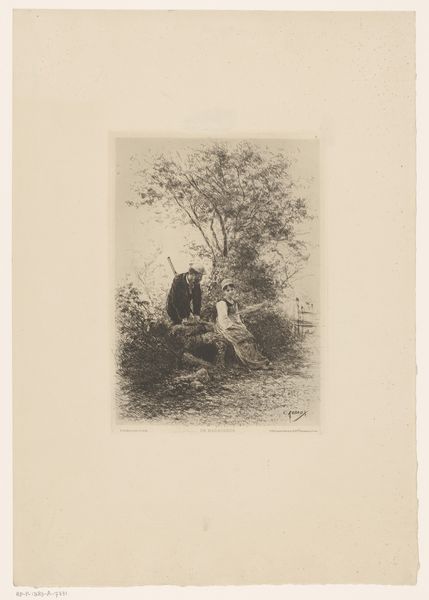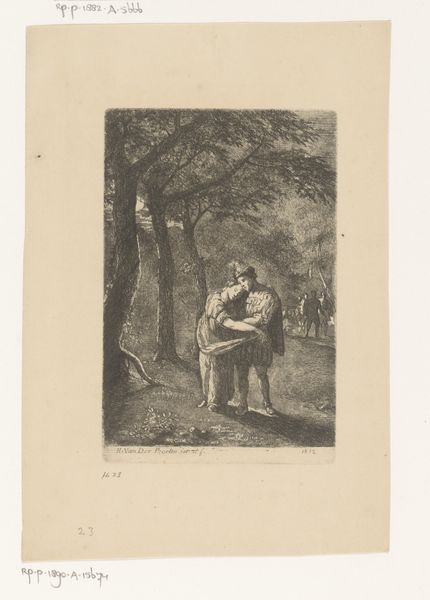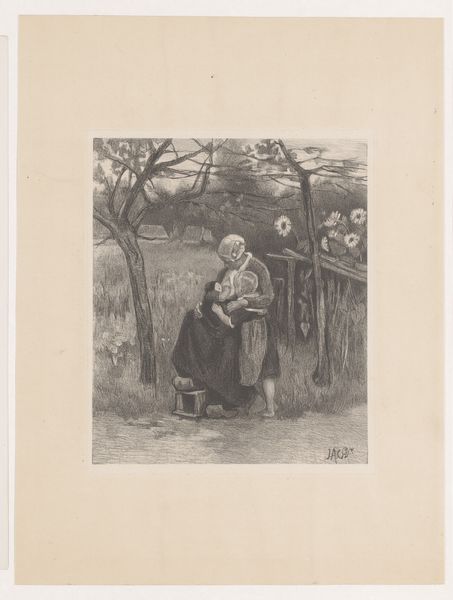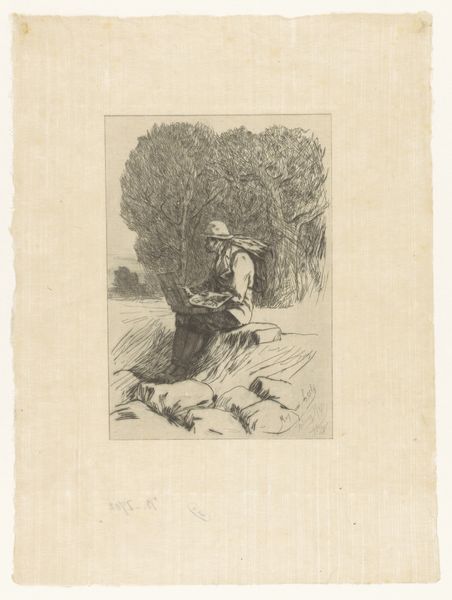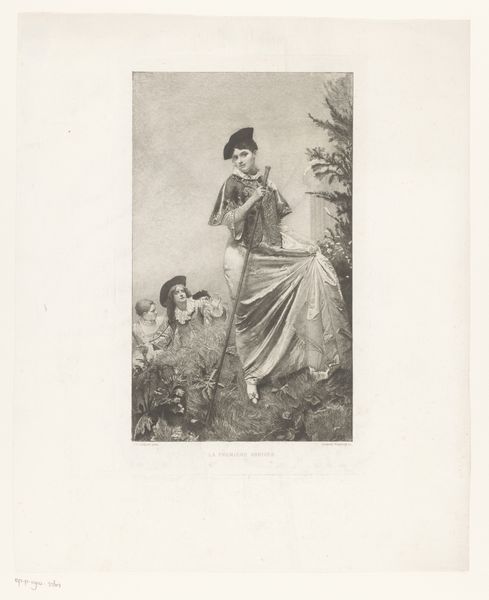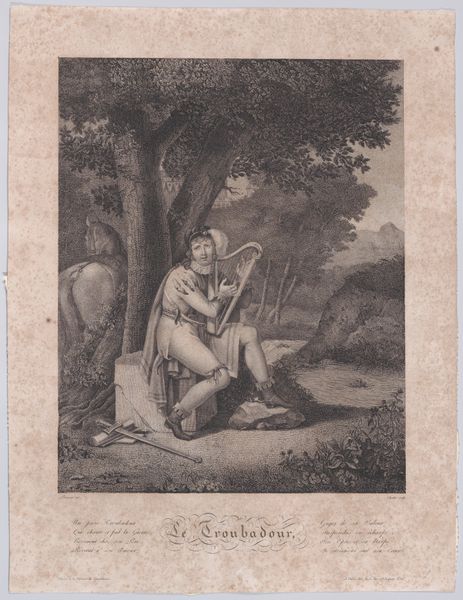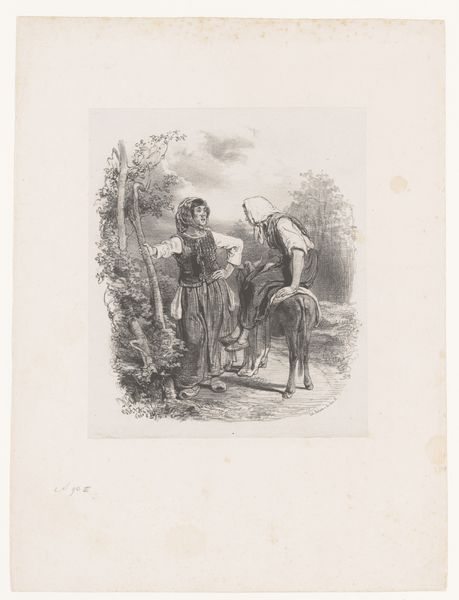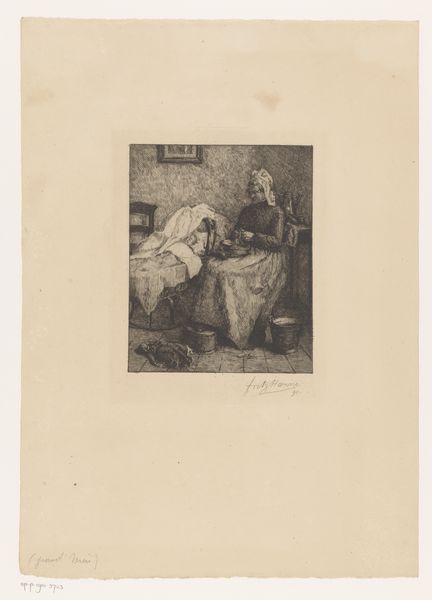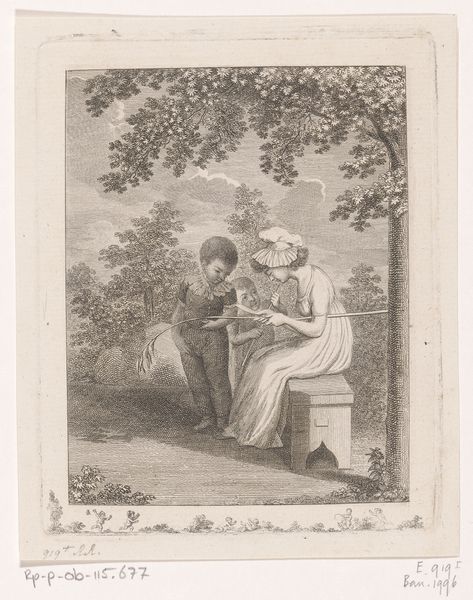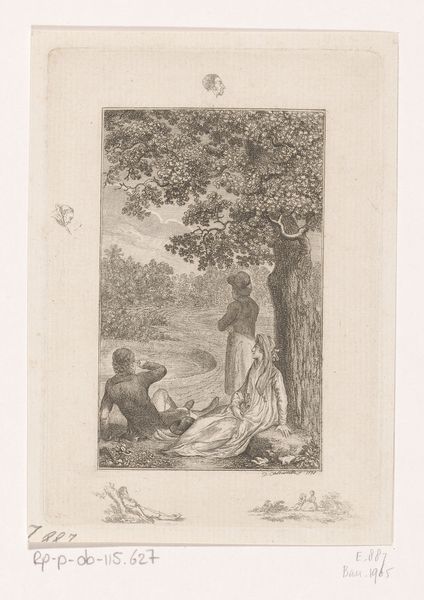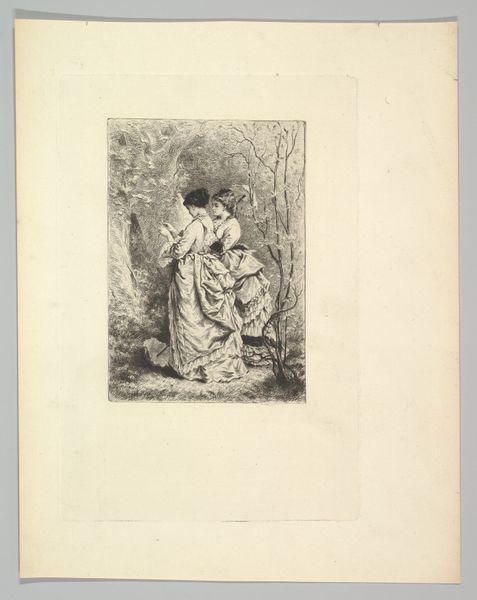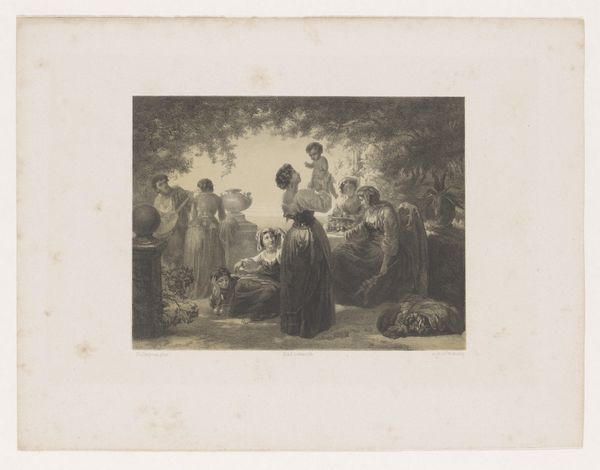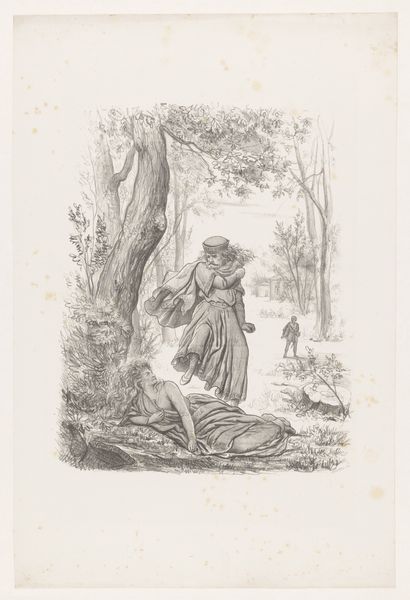
Dimensions: height 232 mm, width 140 mm
Copyright: Rijks Museum: Open Domain
Curator: Here we have “Man en een vrouw onder een boom,” or “Man and Woman under a Tree,” an engraving created sometime between 1825 and 1900 by Johann Wilhelm Baumann. Editor: It gives the feeling of stolen moments, doesn't it? Look at how close they are positioned. There's something very gentle about it. It is the way the lines feel so intentional but delicate, and I am intrigued about what the artist might have been feeling during their process. Curator: Baumann taps into archetypes here. The tree itself is a very old symbol – consider the Tree of Life, the sacred groves of antiquity. Then you have the man and woman, in what seems to be an intimate scene. Perhaps reflecting themes of harmony and nature's bounty, but look closely at her eyes...she doesn't reflect those thematic idealisms. Editor: The artist also clearly intended us to focus on labor and simplicity here. Notice how even in this idyllic landscape, there is the distinct placement of objects implying making do, building. There is clear intention about consumption through this artistic portrayal. What do you make of this, how it connects us to labor? Curator: Precisely! These elements underscore a visual tension. The image becomes less about passive rest and more about the precarity that underpins their pause. We are reminded that nature both shelters and sustains—it’s a delicate balance. Editor: The scale is particularly impressive given that it’s an engraving, this fineness shows labor and technique. Consider what their lives would have entailed in order to have moments of repose like these. It tells us much about labor hierarchies. Curator: I concur. The materiality of the engraving, combined with its composition, directs our attention towards a powerful interplay: that fleeting idyll always wrestles with the weight of their material existence and time’s impact. This imagery underscores lasting visual languages regarding labor, relationships, and our complicated reliance on our planet. Editor: Indeed. And now I view engravings very differently! This work reminds me that art history is never truly still; our connections evolve through process, interpretation, and our experiences with it.
Comments
No comments
Be the first to comment and join the conversation on the ultimate creative platform.
